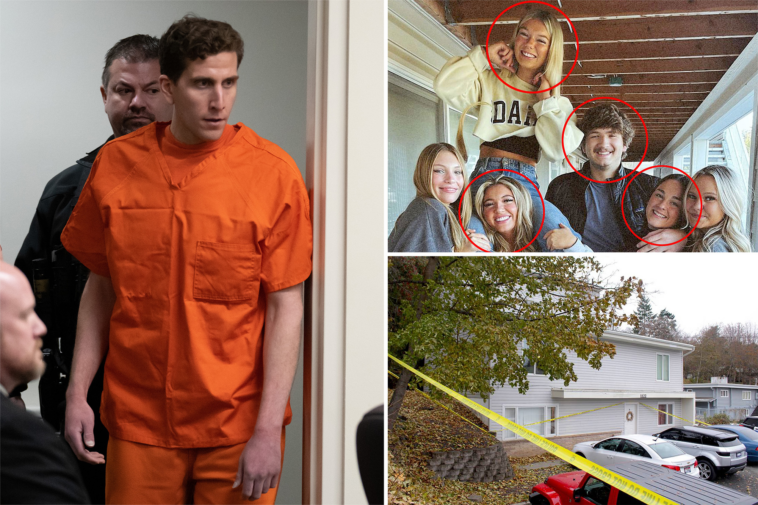Prosecutors amassed a mountain of damning evidence and key legal victories against Bryan Kohberger in the weeks before they offered him a plea deal for the 2022 murders of four University of Idaho coeds.
Kohberger’s defense pushed for delays, tried to block most of the evidence against him, and even suggested a list of “alternate perpetrators” who they claimed could have committed the killings.
But the judge denied most of their motions, allowing a tidal wave of evidence to be presented against the 30-year-old criminology PhD student at his trial, which was scheduled for next month.
The families of victims Kaylee Gonclaves, 21, and Xana Kernodle, 20, slammed the decision to spare Kohberger a trial — and the chance of death by firing squad.
The mother of Ethan Chapin, 20, has said they support the plea deal, while Madison Mogen’s family has not publicly weighed in.
Here are the few of the biggest pieces of evidence prosecutors would have used at Kohberger’s trial.
A man with “bushy eyebrows”
One of the two survivors of the Moscow, Idaho attack reported spotting a masked man with “bushy eyebrows” prowling around the house around 4 a.m., when the stabbings occurred.
The description was bad news for Kohberger, whose own brows are replete with wool.
His defense asked Judge Steven Hippler to bar testimony and evidence related to “bushy eyebrows,” calling the witness’s description irrelevant and unreliable.
Hippler denied that motion, as well as a motion to block the survivors’ initial 911 call in which one mentions seeing a strange man in the house.
A white Hyundai
Security camera footage showed a white Hyundai Elantra circling the area around the victims’ house in the early morning hours on the day of the murders and finally speeding away just after 4 a.m.
Police began looking into local Hyundai Elantra drivers and landed on Kohberger, a PhD criminology student at the nearby Washington State University.
Cell phone tower records
Cell phone tower records showed that Kohberger – or at least his phone – had been up and about during the morning of the stabbings.
His phone disconnected from the network around 2:30 a.m. in Pullman, Wash., then reconnected around 4:30 a.m. near Blaine, a town outside Moscow.
Records also placed Kohberger near the house a dozen times in the days before the murder. He was also nearby around five hours after the slayings, suggesting he cased the property and returned to the crime scene.
A bloody, DNA-laced knife sheath
And perhaps most damning of all — prosecutors has physical evidence that put Kohberger inside the house.
Investigators found a bloody sheath for a Ka-Bar knife at the murder scene. His DNA was found on the button strap of the sheath.
Kohberger’s Amazon.com purchase history also showed he bought a Ka-Bar ahead of the attack.
Detectives recovered trash from Kohberger’s Pennsylvania family home to obtain genetic samples to match the DNA.
Some of the samples were actually recovered from the house next door, as officers watching the suspect observed him dropping off bags of trash in his neighbors’ trash cans.
Suspicious gear
When authorities finally arrested Kohberger, they found a gun, knife, and a black surgical mask in his parents’ house, but most damning of all was an ID card authorities say was connect to the murders hidden inside a latex glove.
The ID card reveal led to speculation that Kohberher knew one of the victims ahead of time and kept their ID as a souvenir — or even planned to leave Joker-style calling cards at the scenes of other killings.



